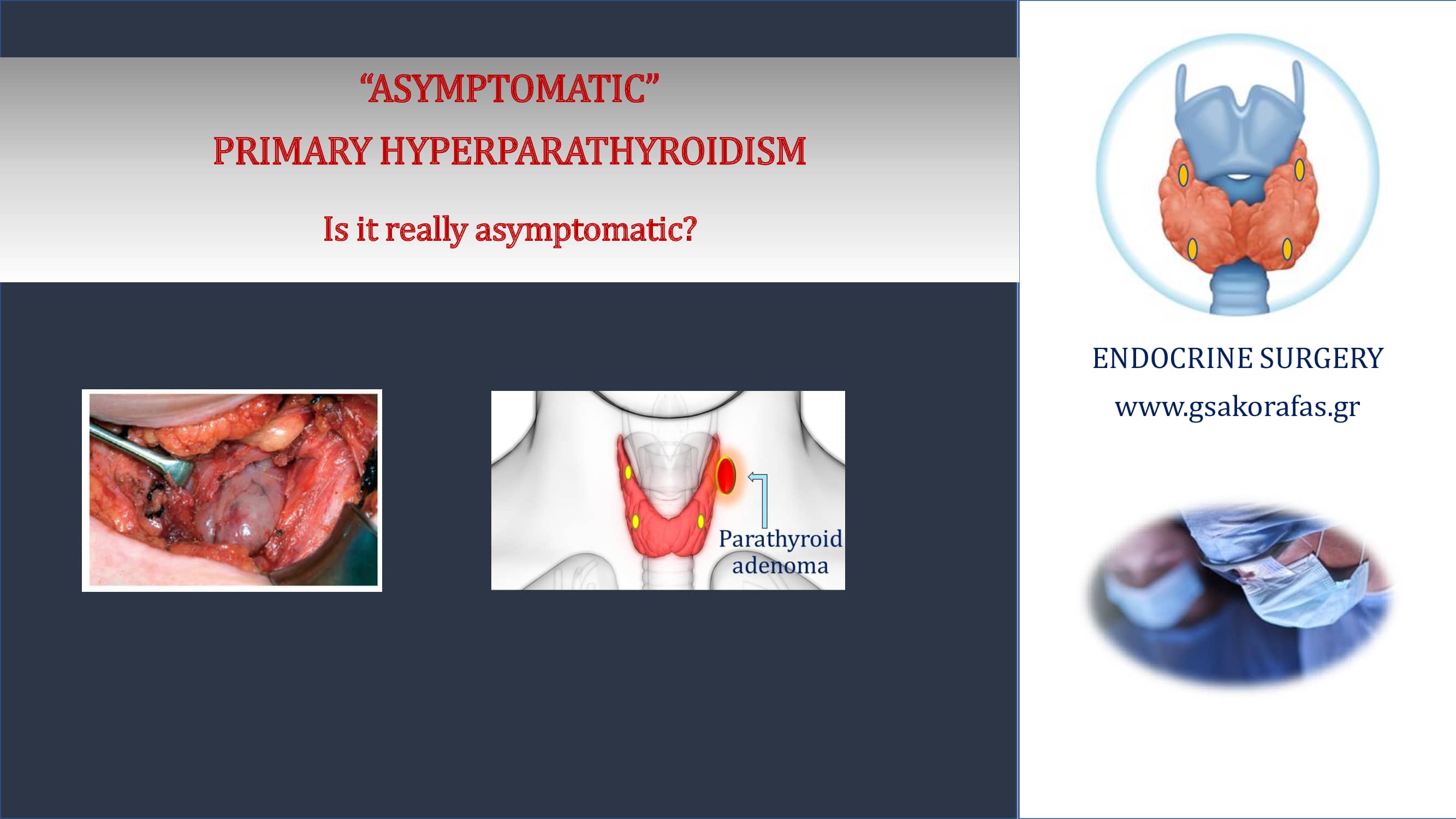Introduction
Primary hyperparathyroidism is most often due to single parathyroid adenoma.
In the past, classic clinical symptomatology, mainly from the two basic “organs-targets” of the disease (bone, kidney) was the typical presentation of primary hyperparathyroidism.
Nowadays, however, due to the frequent detection of asymptomatic hypercalcemia during regular examination (check-up or follow-up), primary hyperparathyroidism is diagnosed early. Thus, currently, primary hyperparathyroidism, is typically not associated with the -often- dramatic clinical manifestations of the past (asymptomatic primary hyperparathyroidism)
‘Asymptomatic’ primary hyperparathyroidism – is it really asymptomatic?
It is estimated that up to 80 – 85 % of patients with primary hyperparathyroidism are presented with ‘asymptomatic’ disease. However, a significant percentage of these patients present with organ target involvement. Up to 12 % of asymptomatic patients have clinically silent nephrolithiasis. Osteopenia / osteoporosis is frequently a common finding and even fragility fractures (following insignificant trauma) may occur.
In addition to these specific findings, even in asymptomatic patients, there are many non-specific symptoms that can be observed. These symptoms include:
- Neuromuscular symptoms:subjective feeling of easy fatigue, mild depression, generalized muscle weakness, mild myalgias/arthralgias, bone/joint pain, back pain, rib cage/chest pain, generalized bone pain, synovitis etc.
- Neuropsychiatric symptoms: psychological and cognitive changes, such as early fatigue, depression, anxiety, emotional instability, memory defects, sleep disturbances, inability to concentrate etc.
Practical significance
These non-specific symptoms may be related to other etiologies and cannot be easily attributed to primary hyperparathyroidism.
However, in clinical practice, it has been observed that many of these symptoms resolve following successful parathyroidectomy. This indicates that these non-specific symptoms were due to primary hyperparathyroidism. Following resolution of these symptoms, quality of life of patients with “asymptomatic” primary hyperparathyroidism often improves. This emphasizes the importance of a detailed clinical examination of the patient with a presumably ‘asymptomatic’ primary hyperparathyroidism when discussing management options.
Parathyroidectomy (most often resection of a single parathyroid adenoma) in these cases offers immediate, definitive cure of the patient with improvement of quality of life, even in the absence of the typical clinical manifestations of hyperparathyroidism.



